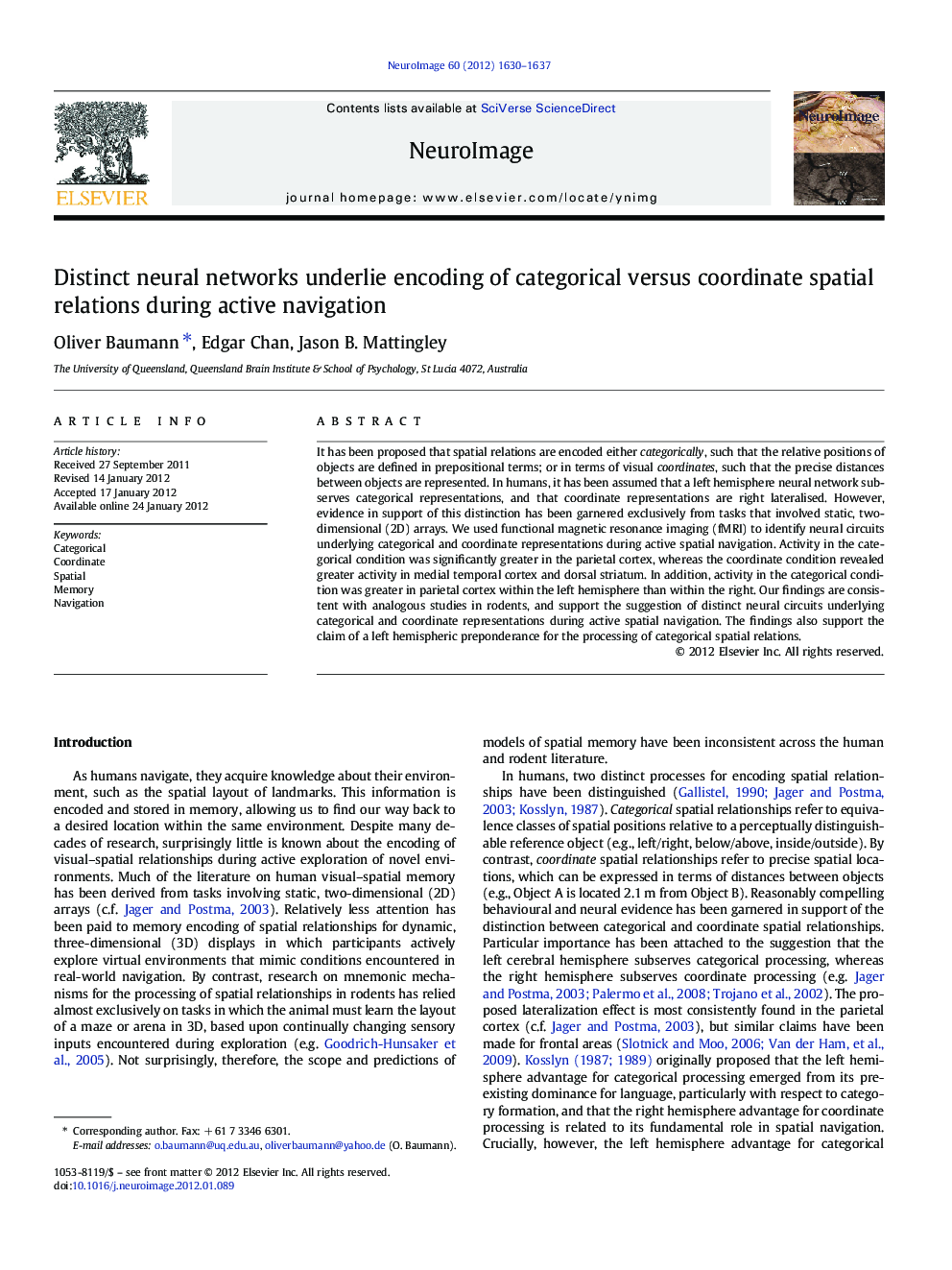| Article ID | Journal | Published Year | Pages | File Type |
|---|---|---|---|---|
| 6031956 | NeuroImage | 2012 | 8 Pages |
It has been proposed that spatial relations are encoded either categorically, such that the relative positions of objects are defined in prepositional terms; or in terms of visual coordinates, such that the precise distances between objects are represented. In humans, it has been assumed that a left hemisphere neural network subserves categorical representations, and that coordinate representations are right lateralised. However, evidence in support of this distinction has been garnered exclusively from tasks that involved static, two-dimensional (2D) arrays. We used functional magnetic resonance imaging (fMRI) to identify neural circuits underlying categorical and coordinate representations during active spatial navigation. Activity in the categorical condition was significantly greater in the parietal cortex, whereas the coordinate condition revealed greater activity in medial temporal cortex and dorsal striatum. In addition, activity in the categorical condition was greater in parietal cortex within the left hemisphere than within the right. Our findings are consistent with analogous studies in rodents, and support the suggestion of distinct neural circuits underlying categorical and coordinate representations during active spatial navigation. The findings also support the claim of a left hemispheric preponderance for the processing of categorical spatial relations.
⺠fMRI was used to examine brain circuits for spatial location memory during navigation. ⺠New locations may be stored in relative (categorical) or metric (coordinate) terms. ⺠Categorical encoding of new locations selectively engaged parietal cortex. ⺠Coordinate encoding activated medial temporal cortex and dorsal striatum. ⺠The findings suggest structural specialisation for encoding of new spatial locations.
